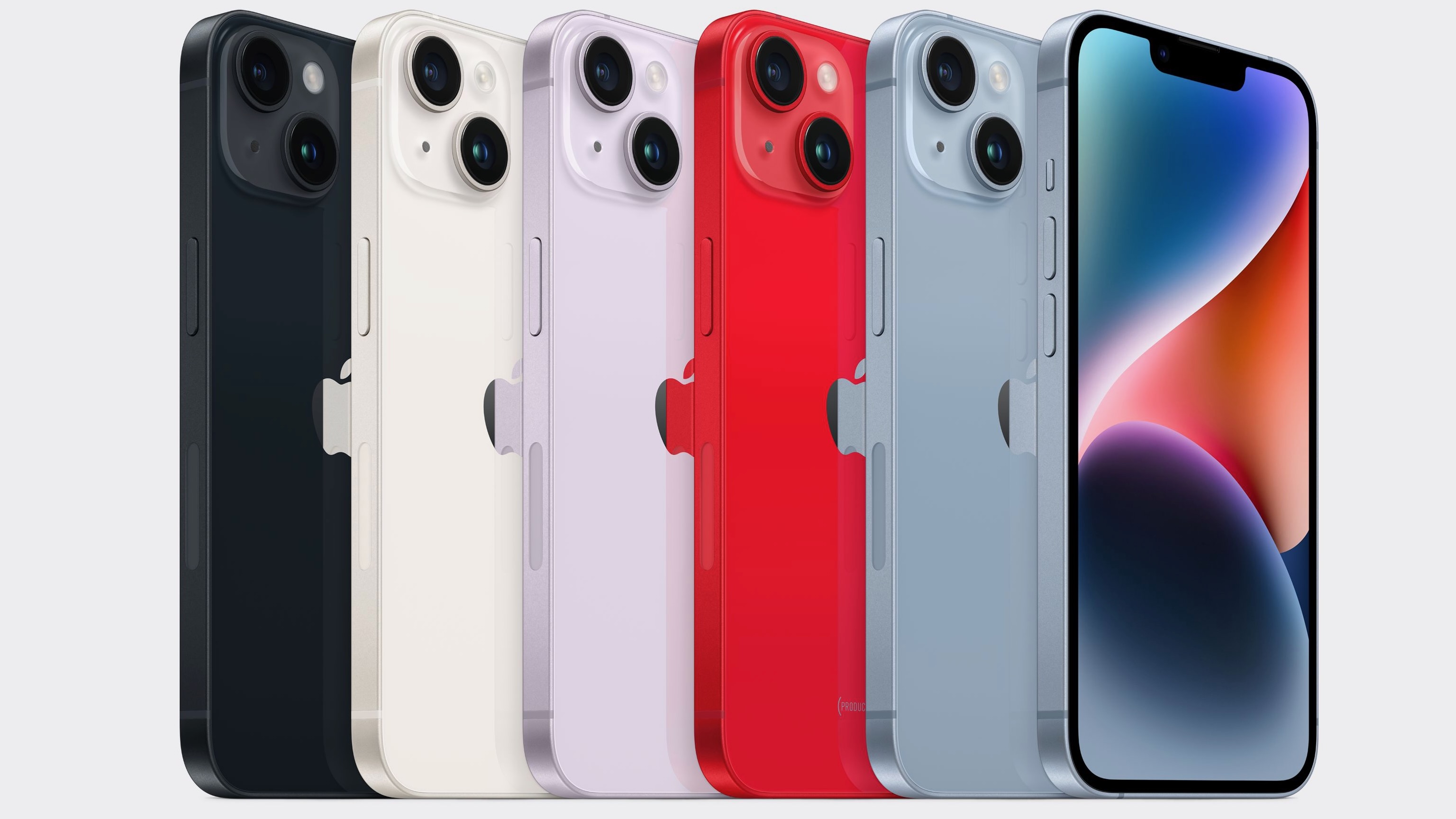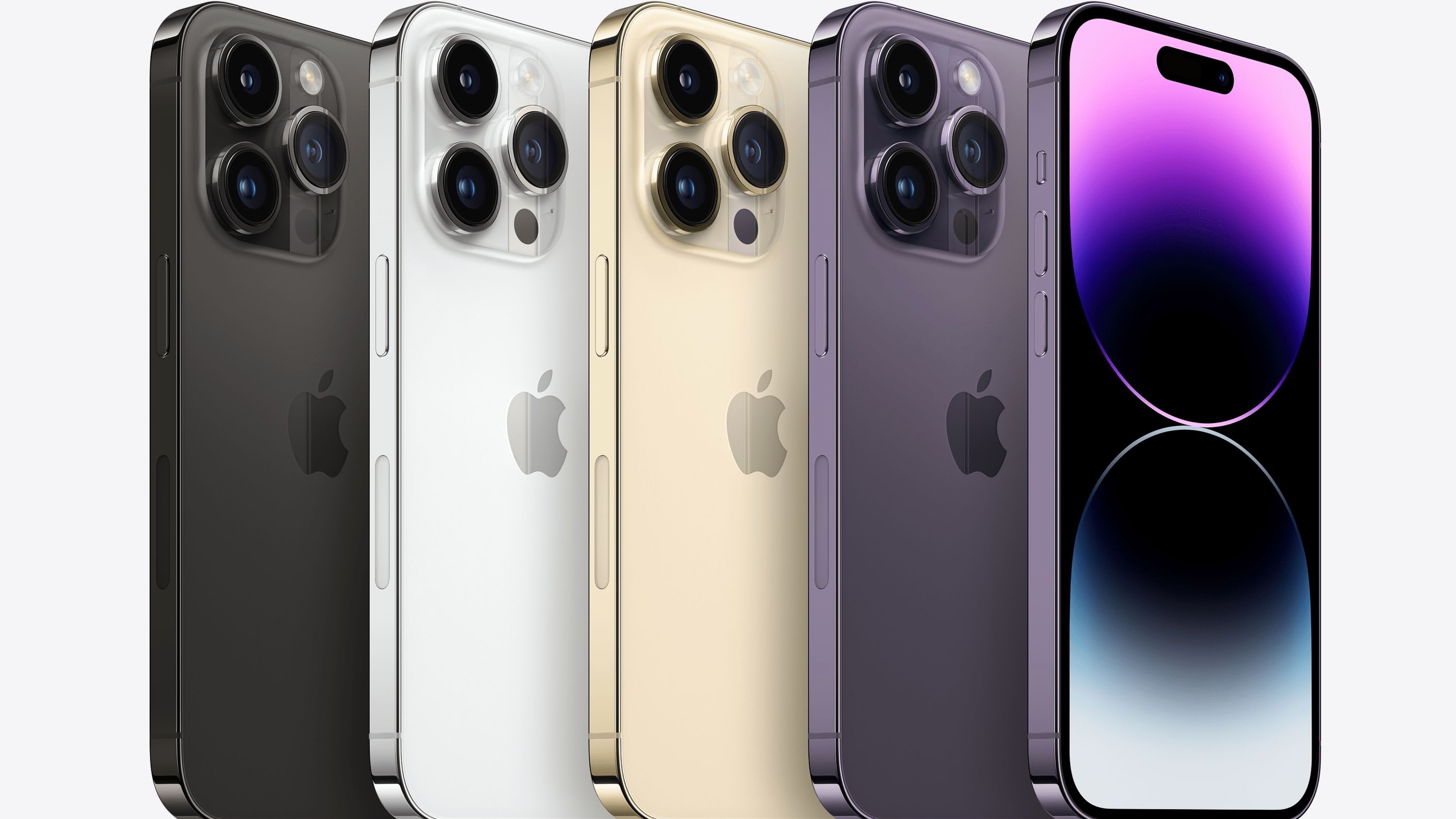iPhone 14 vs. iPhone 14 Pro: Which is better for you?
Which is better: iPhone 14 vs. iPhone 14 Pro?
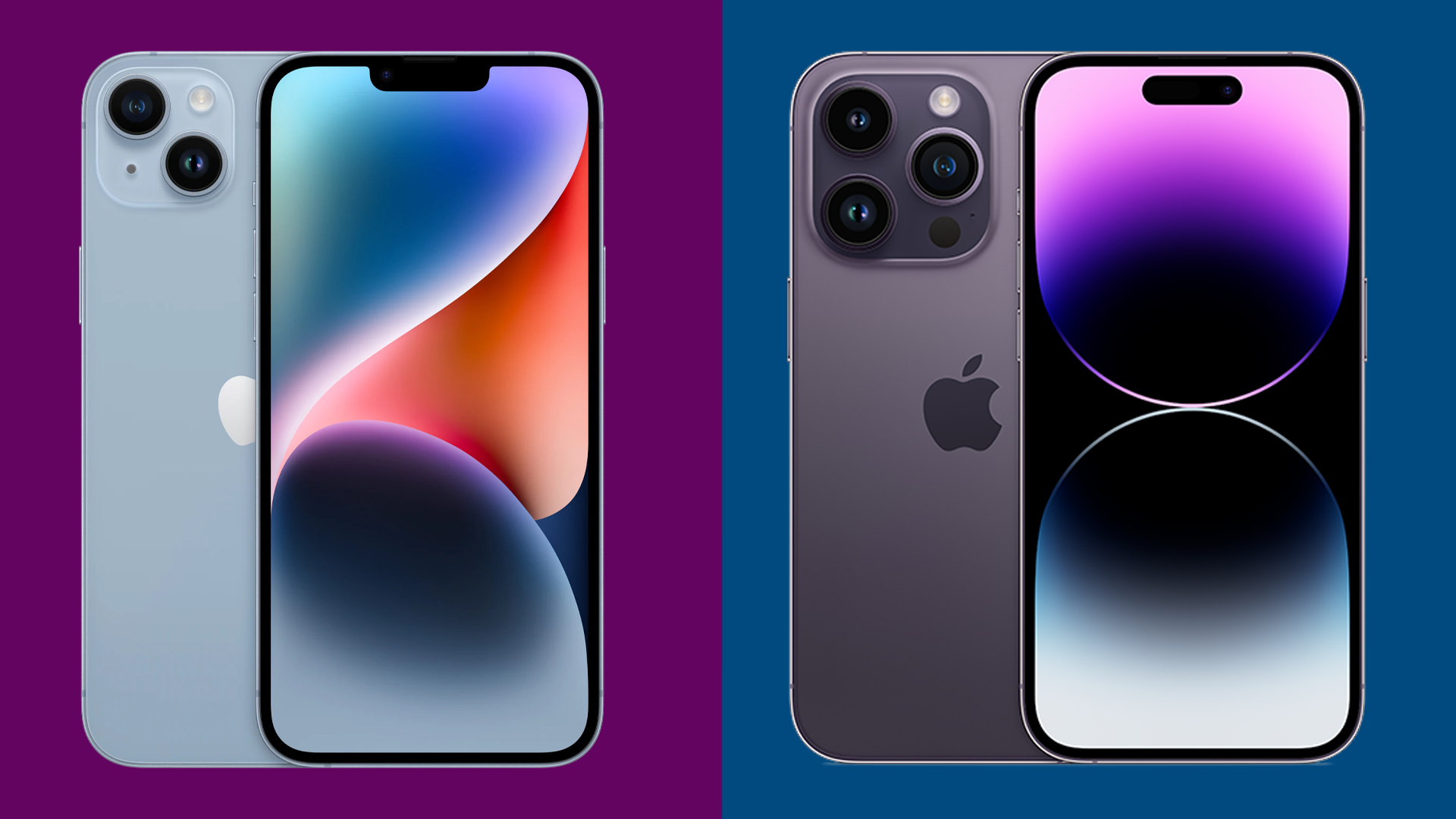
In September 2022, Apple released the iPhone 14 line. It consisted of the basic iPhone 14, iPhone 14 Plus, iPhone 14 Pro, and the iPhone 14 Pro Max
Each of the phones brought improvements compared to the previous range. Notably, some features like an Always-On Display, ProMotion cameras, and the choice of 1TB storage were reserved for the larger Pro models. The Dynamic Island was also exclusive to the iPhone 14 Pro and Pro Max models. The interactive area on screen replaced the notch, allowing some apps to showcase information.
The iPhone 14 colors -- including the lemony deliciousness of the new yellow model -- are quite different from the more professional (and less fun) iPhone 14 Pro colors of black, gold, silver, and purple.
While the Pro models may offer the most features, that doesn't mean they're the best for everybody. If you're on a tighter budget or don't expect to get much use out of the Pro's advanced features, you may be better off with the still-excellent iPhone 14.
If you're looking to treat yourself or renew a contract, here's our short guide to help you decide between some of the best iPhones so far.
iPhone 14 vs. iPhone 14 Pro: Specifications
The differences between the two iPhone 14 models are small, but significant. Here's a quick overview of the contrasts.
| Header Cell - Column 0 | iPhone 14 Pro/Pro Max | iPhone 14/14 Plus |
|---|---|---|
| Design | Ceramic Shield front, Surgical-grade stainless steel | Ceramic Shield front, Aerospace-grade aluminum |
| Colors | Deep Purple, Gold, Space Black, Silver | Blue, Purple, Midnight, Starlight, (PRODUCT)RED |
| Processor | A16 Bionic | A15 Bionic |
| Display | iPhone 14 Pro: 6.1-inch Super Retina XDR display; iPhone 14 Pro Max: 6.7-inch Super Retina XDR Display | iPhone 14: 6.1-inch Super Retina XDR display; iPhone 14 Plus: 6.7-inch Super Retina XDR Display |
| ProMotion | Yes | No |
| Back camera | Pro camera system: 48MP Main, Ultra Wide, Telephoto | Advanced dual-camera system 12MP Main Ultra Wide |
| Front camera | Advanced dual-camera system 12MP Main Ultra Wide | Advanced dual-camera system 12MP Main Ultra Wide |
| SOS emergency | Yes | Yes |
| Crash alert | Yes | Yes |
| Dynamic Island | Yes | No |
| Storage | 128GB, 256GB, 512GB, 1TB | 128GB, 256GB, 512GB |
| Battery (video-playback) | iPhone 14 Pro: up to 23 hours; iPhone 14 Pro Max: up to 29 hours | iPhone 14: up to 20 hours; iPhone 14 Plus: up to 26 hours |
| Always-On display | Yes | No |
| Size | iPhone 14 Pro: 5.81 by 2.81 by 0.31 inches; iPhone 14 Pro Max: 6.33 by 3.05 by 0.31 inches | iPhone 14: 5.78 by 2.82 by 0.31 inches; iPhone 14 Plus: 6.33 by 3.07 by 0.31 inches |
| Weight | iPhone 14 Pro: 7.27 ounces; iPhone 14 Pro Max: 8.47 ounces | iPhone 14: 6.07 ounces; iPhone 14 Plus: 7.16 ounces |
| Starting price | iPhone 14 Pro: $999; iPhone 14 Pro Max: $1,099 | iPhone 14: $699; iPhone 14 Plus: $799 |
The iPhone 14 and iPhone 14 Pro are very similar in many ways. Their overall design looks the same at first, till you notice the Dynamic Island on the Pro model. There's a Ceramic Shield front, water resistance that goes as deep as six meters for up to 30 minutes, 128GB storage options, and MagSafe charging.
iMore offers spot-on advice and guidance from our team of experts, with decades of Apple device experience to lean on. Learn more with iMore!
Both models also include the new SOS emergency and crash detection safety features. However, both the display and cameras do differ between the models.
iPhone 14 vs. iPhone 14 Pro: Display
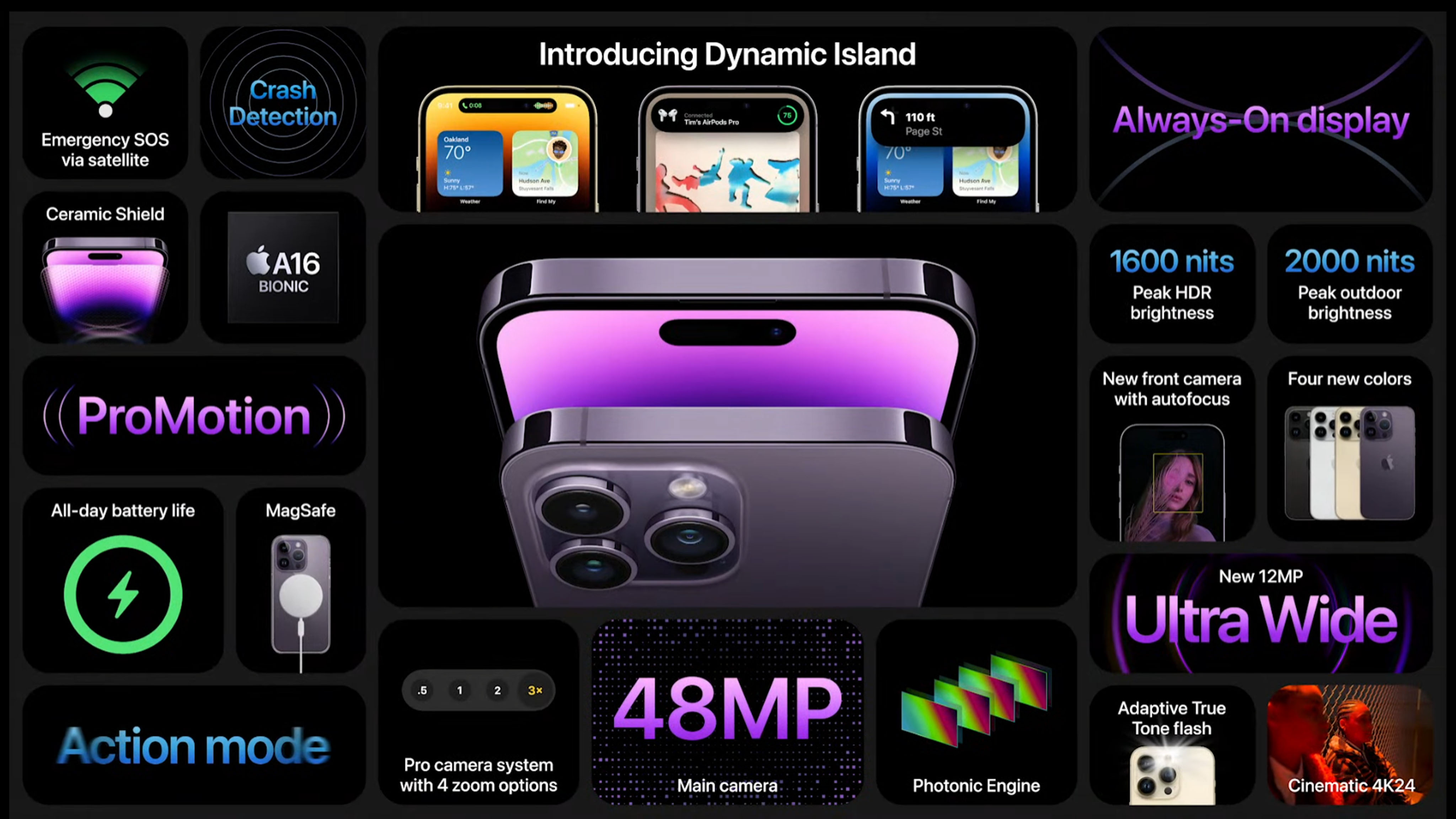
The displays found on the four newest iPhones are the same type, albeit not at the same size. Each one has a Super Retina XDR display that uses OLED technology. However, some differences exist between them to explain the different denominations and price tags.
The iPhone 14 comes with a 6.1-inch (diagonal) all-screen OLED display with a 2532-by-1170-pixel resolution of 460 PPI (Pixel Per Inch). In comparison, the iPhone 14 Pro's 6.1-inch (diagonal) all-screen OLED display has 2556-by-1179-pixel resolution at 460 PPI.
The 6.7-inch iPhone 14 Plus goes further still with a 2778-by-1284-pixel resolution at 458 PPI while the 6.7-inch iPhone 14 Pro Max offers a 2796-by-1290-pixel resolution at 460 PPI.
Whichever one you choose, you're gaining a great screen thanks to the core elements being excellent.
The iPhone 14 Pro series is the only one that has an Always-On display along with Dynamic Island support. There's also ProMotion which ensures the display can run at a faster or slower framerate, depending on how you're using it at the time. A low frame rate is used when the Always-On display is active but you're not using the phone, while a higher one is implemented during use. It's all in a bid to keep battery life high.
The Dynamic Island is unique to the iPhone 14 Pro, where it's at the top of the display, replacing the notch. It's where the front-facing camera is housed. It combines hardware and software to create a place where you can see alerts from your favorite apps such as Music, News+, and many more.
Such alerts are real-time and interactive. For instance, if you wish to skip a track on Apple Music, you can do so via the island.
This is only available on the Pro series for now, with the regular iPhone 14 and 14 Plus still using the notch.
iPhone 14 vs. iPhone 14 Pro: Cameras
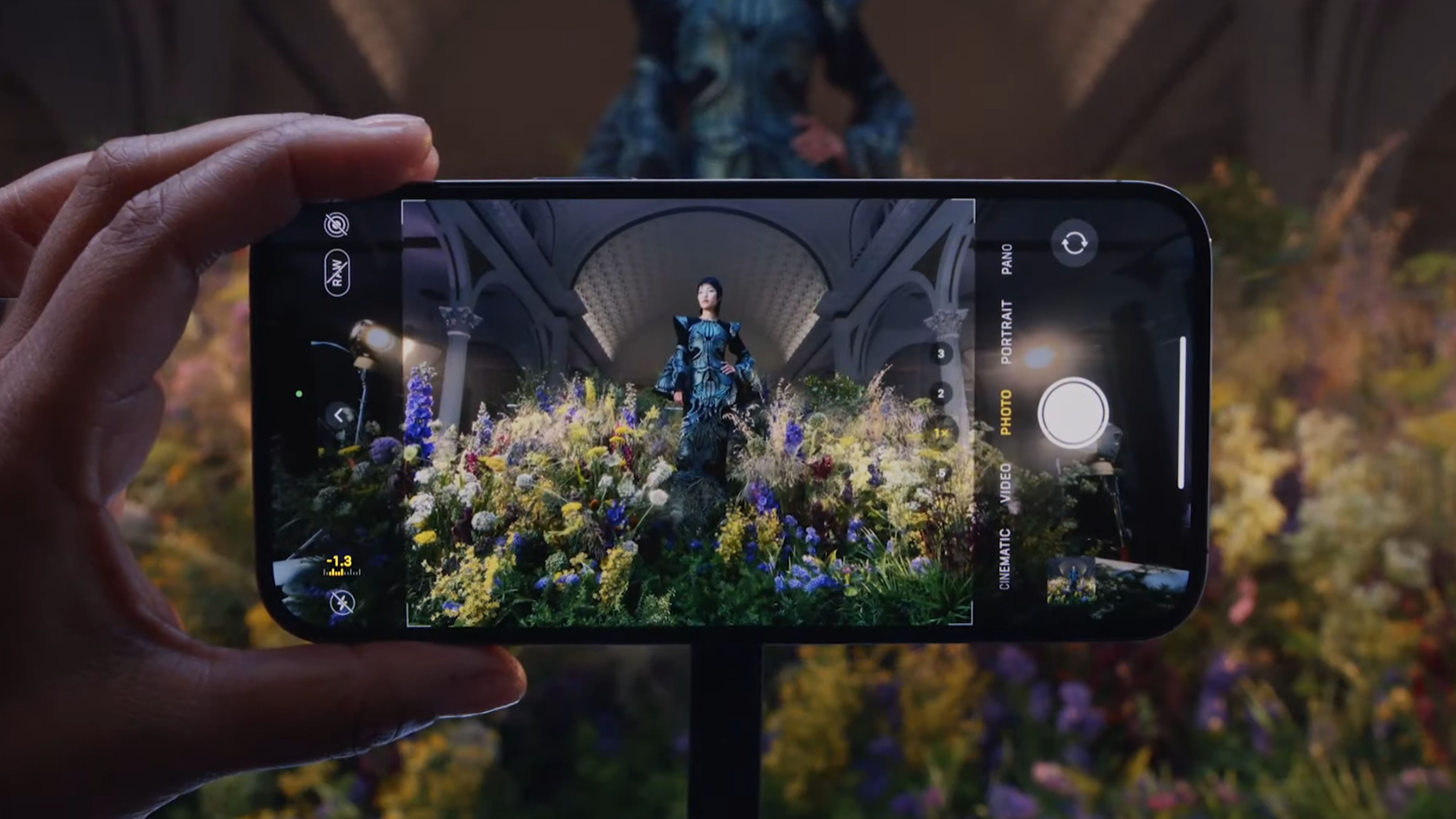
One of the most significant differences over the years between the regular iPhone and the iPhone Pro models has been the cameras. That remains the case with the iPhone 14 and iPhone 14 Pro.
On the iPhone 14, you get a dual camera system with 12MP Main and Ultra Wide lenses. On the iPhone 14 Pro, Apple has included a next-generation "Pro" camera system with a 48MP Main, 12MP Ultra Wide, and 12MP Telephoto lens. It also has second-generation sensor-shift optical image stabilization.
In order to take photos in 48MP, you have to switch the image type to the RAW format, otherwise you'll be getting the same 12MP shots as before.
The front-facing cameras on both series are more similar though. You'll find a 12MP TrueDepth camera with a Retina Flash and an all-new Photonic Engine across all the models, which means you can take better selfies in low-light environments.
For video, not much has changed compared to the iPhone 13 line. Regular iPhone 14 models don't have ProRes video recording, which is only available on Pro devices.
iPhone 14 vs. iPhone 14 Pro: Which should you buy?
For most people, anything from the iPhone 14 line will be the best iPhone. An attractive choice, the iPhone 14 or iPhone 14 Plus proves less expensive, comes in brighter colors, and has many of the same great features found on the Pro models.
However, if you want the latest and greatest in Apple's camera efforts, and you've long been hoping for the notch to disappear, you can't go wrong with the iPhone 14 Pro or iPhone 14 Pro Max.
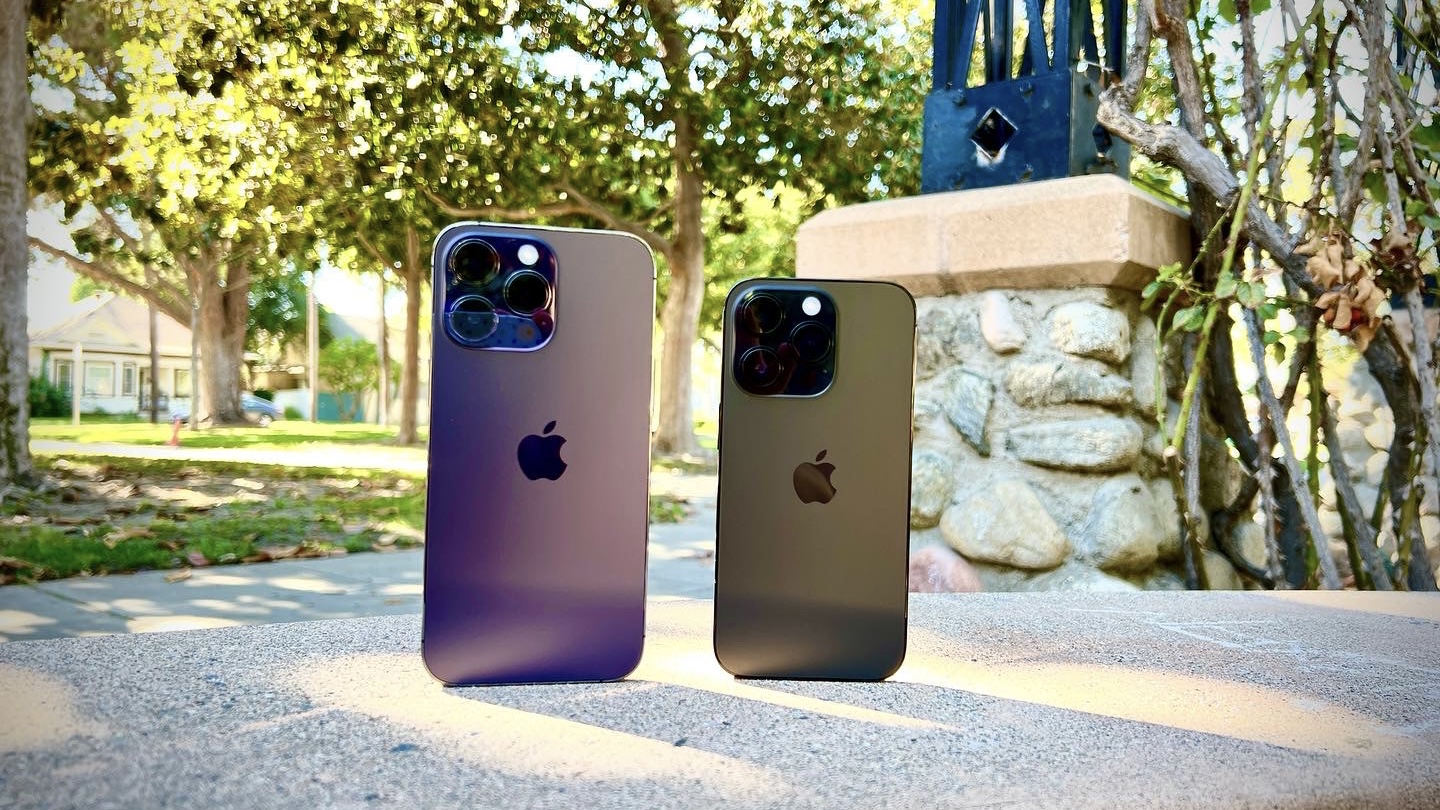
A one-way trip to Dynamic Island.
Pros
- Blazing fast performance with A16
- 48-megapixel main camera with triple lens camera system
- Dynamic Island is a useful notch replacement
- Up to 1TB of storage space
- Finally has an Always-On display
Cons
- Expensive
- Deep Purple could have been more...purple
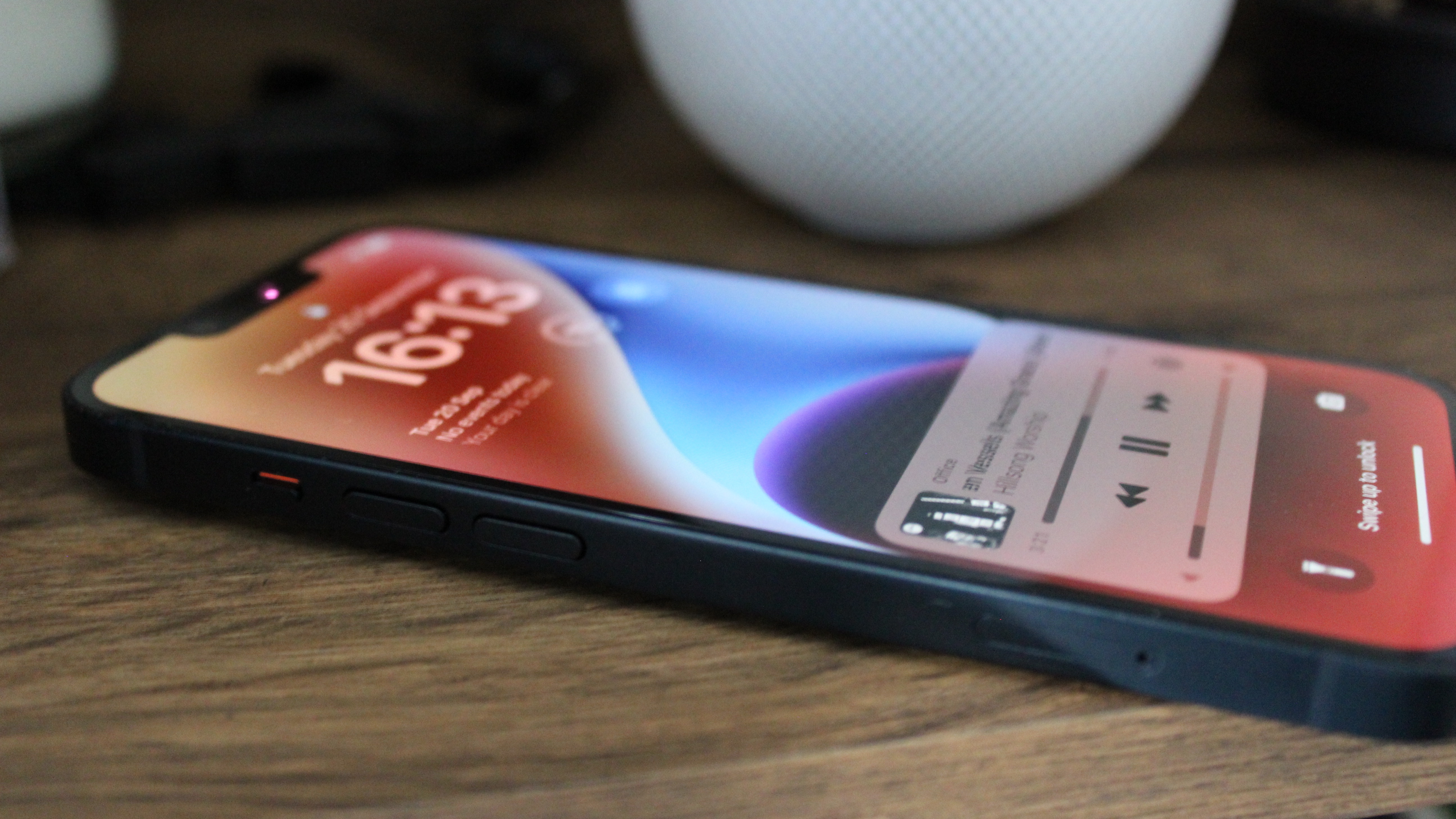
Do you really need the 14 when the 14 Pro is available?
Pros
- + Improved A15 chip
- + Slightly better battery life
- + Improved cameras
- + Photonic Engine
- + Crash Detection and SOS via Satellite
Cons
- – Limited upgrades over iPhone 13
- – Glossy back feels cheap and is a fingerprint magnet
- – Lacking in hardware over Android rivals
- – 60Hz display in 2023
- – Overshadowed by iPhone 14 Pro

Daryl is iMore's Features Editor, overseeing long-form and in-depth articles and op-eds. Daryl loves using his experience as both a journalist and Apple fan to tell stories about Apple's products and its community, from the apps we use every day to the products that have been long forgotten in the Cupertino archives.
Previously Software & Downloads Writer at TechRadar, and Deputy Editor at StealthOptional, he's also written a book, 'The Making of Tomb Raider', which tells the story of the beginnings of Lara Croft and the series' early development. His second book, '50 Years of Boss Fights', came out in June 2024, and has a monthly newsletter called 'Springboard'. He's also written for many other publications including WIRED, MacFormat, Bloody Disgusting, VGC, GamesRadar, Nintendo Life, VRV Blog, The Loop Magazine, SUPER JUMP, Gizmodo, Film Stories, TopTenReviews, Miketendo64, and Daily Star.
